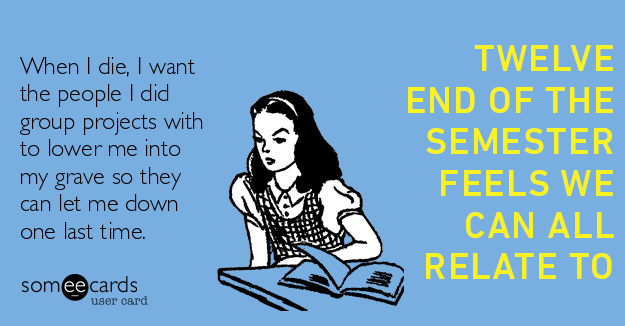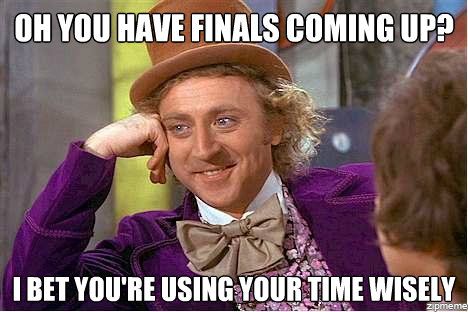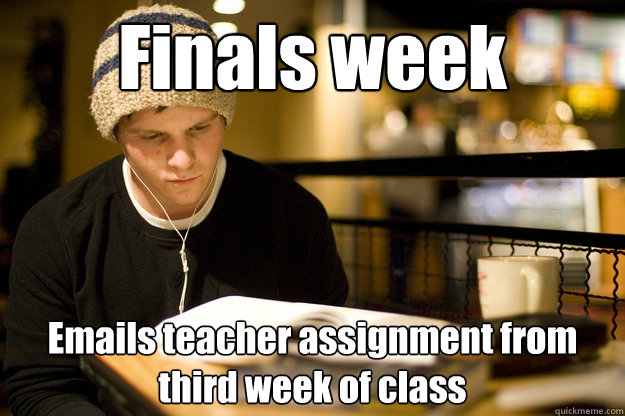
BEFORE YOU ENTER:
Tonight’s class will be in D27
CLASS AGENDA for April 17:
- Questions about “perfect” first page
- FE#5 Evidence paragraphs
- Review of remaining assignments/Family Meeting time set-up
- Easy to follow checklist for end of semester
YOUR BLOG: A final link to your COMPLETED BLOG should be sent to me via email (joseph.costal@stockton.edu) BEFORE the semester deadline.
Subject line MUST read: BLOG FINAL
Blog Post #8: whatever you wrote will count as extra credit
Blog Post #10:
What do we do to insure credibility in such a biased media environment?
Choose TWO of the articles on President Trump linked above. From the articles, determine if the publication is leaning LEFT (liberal, progressive), RIGHT (conservative, nationalistic) or CENTER. Use at least one citation from each article to support your claim.
Blog Post #11: A Letter to Me: One page of reflection on the course, your year at college and the world that waits for you. Consider the following: what did you learn in this class? Highlights and low-lights of the course? What about the year here at Stockton in general? What did you learn about yourself? What’s your hope for the next 5 months? The next 5 years? And beyond?

Your objective for this assignment is to research, analyze, create a thesis, and synthesize a solution for a common social problem. To do this, let’s begin by challenging the common ways of looking at problems themselves. The process of research, as discussed in this course, is to generate, then narrow, questions. Great research creates questions. Great argumentation papers do more to generate further questions than to answer them. Let’s ponder this together, first.
The goal of the “Proposing a Solution” Essay is to make an argument that calls an audience to action. By focusing your argument on one specific public problem, you will be responding to the frequently asked question: But what can we do?

Consider this as your essay’s development in three parts:
1) a description of the problem (with researched background).
2) a proposal for a solution.
3) a justification for that solution.
Your introduction should get your audience’s attention (possibly by appealing to pathos through anecdote or example), provide background on the conversation you are joining, and clearly state the claim you intend to support (thesis).
I will look for the following in your essay:
•Does the writer make a convincing argument as to why her audience should or ought to take action?
•Is the proposed action (or “claim”) clearly identified and explained?
•Is this claim logically supported by reasons and evidence?
•Have opposing views been considered or addressed?
•Does the paper provide adequate background on the problem the author is attempting to remedy?
• Use APA for the entire paper. Find resources for doing this in Hacker. Or here. Or here.
• Use quotations only where necessary. Better to summarize information and discuss how it becomes evidence when married to your point.
• Each paragraph should have a topic sentence and show unity.
• Each evidence paragraph will contain at least one citation identifying where you got your information.
• This is your chance to SHINE on the fact that our multiple revisions have not been a total waste.

Come to conference class with the following prepared:
Conference Assignment: Please have the following information ready for submission during our conferences. All components must be typed and professionally presented:
1. Working Outline
2. Working Thesis
3. Annotated Bibliography
 2. Student will present a working thesis. The expectation is that this will allow us to work together in making sure the paper is on the right track. Thesis should evince the components of thesis writing discussed in class today.The thesis for this paper should be both complex and clear.
2. Student will present a working thesis. The expectation is that this will allow us to work together in making sure the paper is on the right track. Thesis should evince the components of thesis writing discussed in class today.The thesis for this paper should be both complex and clear.

1. …have approx seven pages total, but more importantly FIVE pages of EVIDENCE (body) (Not including formatting pages)? If not, how can you add length without adding fluff?
2. …have proper formatting (12-point, double-spaced, one-inch margins, Hacker approved APA-style? including abstract and CORRECTLY formatted WORKS CITED)
3. …have an interesting, original, and relevant title?
4. …have an effective, divisive attention-grabbing introduction?
5. …provide necessary background for reader to understand YOUR THESIS (NOT the entire topic. Think 5Ws) (BG MUST be relevant to your thesis!)
6…establish the controversy surrounding the issue? Does it accomplish this through the use of personal anecdote? Is the introduction/background adequate in length (no more than 1/4 of entire page)?
5. …have a specific and explicit/implicit thesis statement that evinces the main issue and the writer’s position? Is it argumentative? Does it contain a subordinate clause to drive complexity?
6. …have logical development? Does each paragraph flow into the next, using the thesis as a road map to “fulfill the reader’s anticipation?”
7. …have sufficient supporting evidence? Does the paper employ strong ethos such as facts, statistics, examples, and expert opinions? Is this support connected to the thesis in a meaningful way? In other words, is it relevant, accurate, and representative?
8. …have credible sources? Are several of the sources also academic, scholarly and peer-reviewed? Is it free of questionable web sources such as http://www.beardedguysanswerimportantquestions.com?
9. …have NO generalizations, overstatements or other forms of logical fallacies?
10. …have a fair representations of source integration like direct quotations and summaries? Are DQs appropriate in scope and length (not too long, not irrelevant)? ARE DQs formatted correctly?
11. …have in-text citations after every quotation, paraphrase, or summary? Are there citations after each body paragraph (or included in each?) Are the in-text citations in proper APA format?
12. …also have attributions? Especially in areas where the credibility needs to be justified because it is not immediately apparent, or the credibility is strong and needs to be relayed narratively.
13. …have appropriate language use for an academic setting? Has he or she eliminated any abbreviations, slang or other informal language?
14. …have appropriate and consistent person? If he or she uses “you,” is he or she addressing the reader? Is he/she ADDICTED to “you?” Is only necessary 1st person used? No “I think,” “I believe,” and “I feel”?
15. …have obvious typos? Spelling errors, punctuation or other sloppy mechanics?
16. …have obvious grammatical or sentence construction errors like fragments, comma splices or run-ons?
17. …have a proper APA title, page, abstract, works cited & running header?
18. …have an effective conclusion in which the writer emphasizes the importance of the issue and by urging the reader to do something? Is the conclusion merely a summary of the writer’s main points? Is it adequate in length?
19. …evince the features of a true argumentative-persuasive essay, or has he or she merely written an informative work?
20. …have both sides of the issue represented in pursuit of the thesis?

